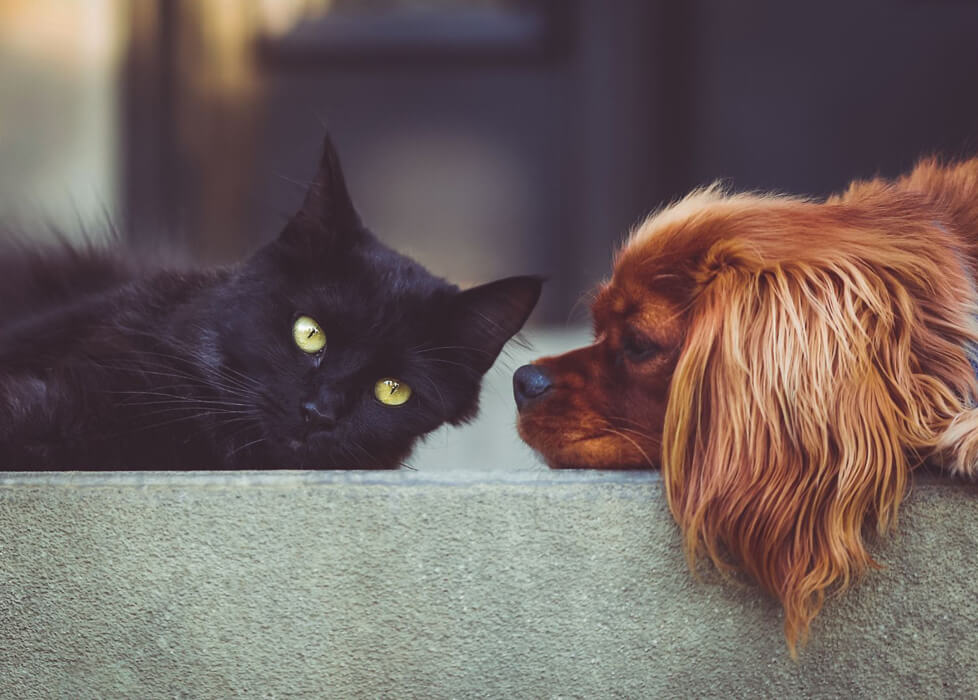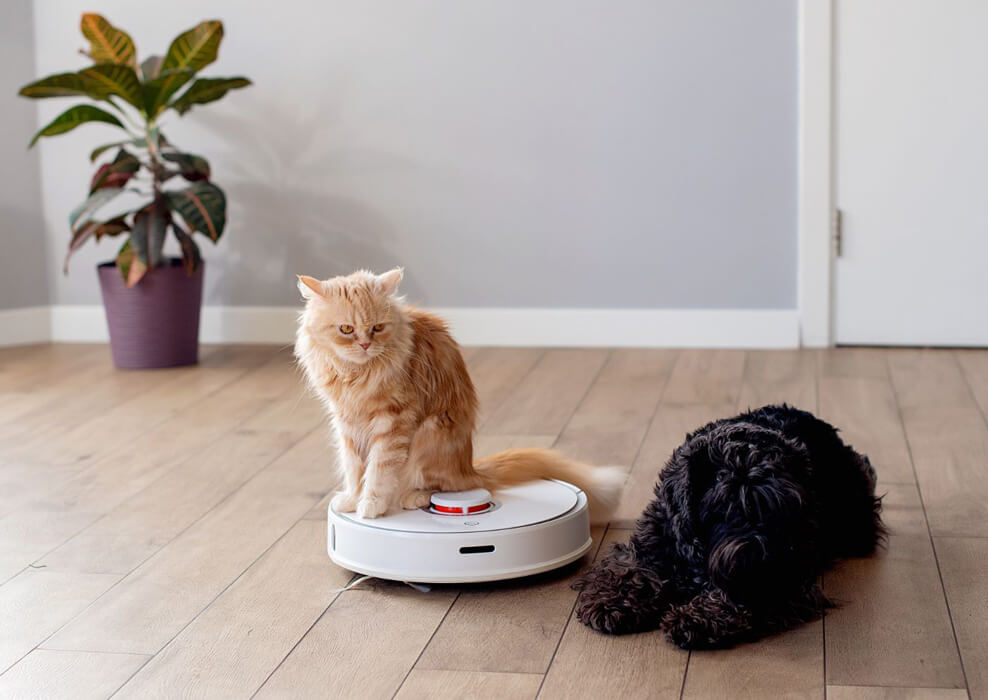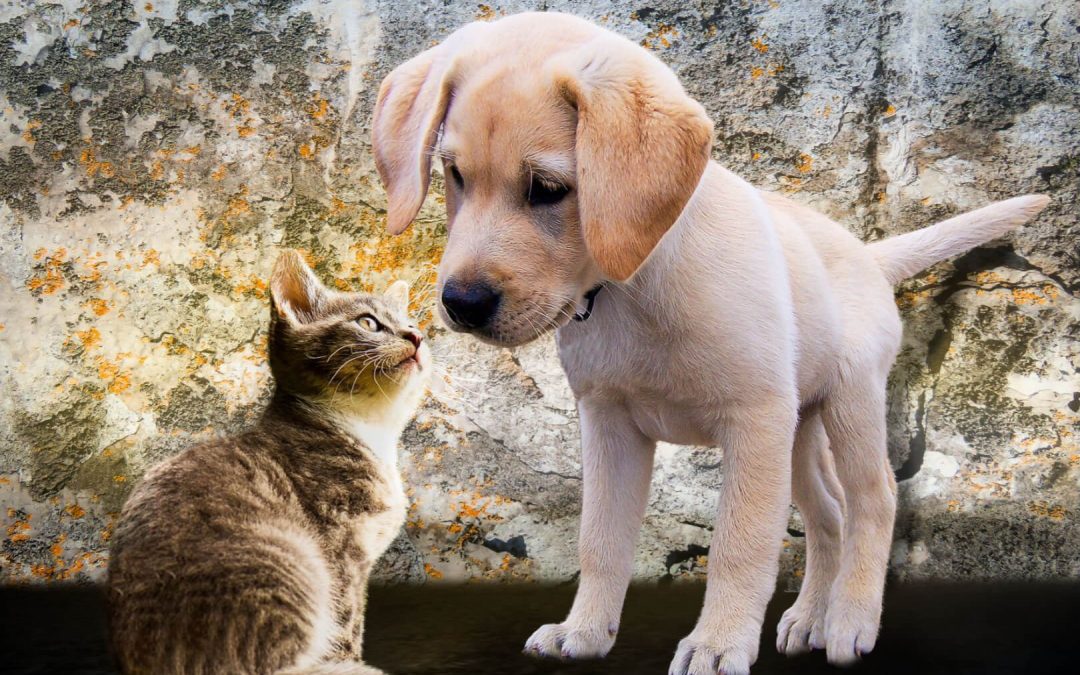The friendship between dogs and cats can be real. Once you have properly acclimated them, they are capable of living peacefully together. Be patient as you introduce them as a pet owner. Our article thoroughly explains how to start the acclimation process between dogs and cats, and what to pay attention to for success!
How successful will the process of acclimating a dog and a cat be?
Some dogs have excellent relationships with cats, while others are unable to live with them. Just as with dogs, where some individuals don’t get along while others do, it’s often uncertain whether harmony will exist between cats. Even if a dog has lived harmoniously with other cats for years, the arrival of a new cat could change the dynamic, so a good relationship is not guaranteed.
The success of acclimating a dog and a cat can depend on factors such as the animals’ age, personality, activity level, environment, and many other variables.

Body language is important during the process of acclimating a dog and a cat
When introducing pets, it’s important to pay attention to the body language of both animals. If the cat pulls back its ears, arches its back, or sways its tail back and forth, it indicates that it’s not enjoying the encounter.
Dogs also show when they’re uncomfortable. If your dog has a strong prey drive, be particularly vigilant because it may easily turn towards the cat. It may stiffen, stare, bark, or whine. This is a clear sign that it’s not advisable to let the dog get close to the cat.
Ideally, the dog remains calm in the presence of the cat. It’s important for the dog to pay attention to the cat, but not to fixate its gaze on it.
The behavior of both the dog and the cat also depends on the environment. Just because the dog gets along with the cat indoors doesn’t necessarily mean it will behave the same outdoors. It’s important to observe the dog’s body language in every new situation to understand how it reacts to the environment.

How to introduce the dog to the cat?
The gradual introduction of the dog and the cat requires patience. Here are some steps to help in this process:
Separate areas
Start by having the dog and the cat in separate areas. This allows both animals to explore and get used to the new environment.
Sharing scents
Exchange toys, blankets, or other items used by both animals. This helps them get used to each other’s scent.
Controlled meetings
Begin with short, controlled meetings between the two animals. Keep the dog on a leash to prevent sudden movements. Watch the body language of both animals, and if either of them seems stressed or aggressive, return to separate areas.
Positive reinforcement
Reward both animals when they behave calmly around each other. Praise them and give them treats to establish a positive relationship between them.
Gradual togetherness
Gradually increase the duration and frequency of time spent together by the two animals while still observing their behavior. If any problems arise, go back to previous steps and slow down the process.
Patience and time
Don’t rush and don’t force anything. Each animal will adjust to the new situation in its own time. Give them time to get used to each other, and remember to be patient throughout the entire process.
Slow and gradual acclimatization
If you notice that your dog views the new cat as prey, then they need to be acclimatized gradually.
First, the cat should be kept in a separate room that can be closed off. Where the dog cannot enter, and it’s not necessary for them to enter. For example, if the dog sleeps with you in the bedroom at night, the cat should definitely not be placed there. The goal is for them to get used to each other’s presence without coming face to face. Even if they can’t see each other, they can hear and smell each other.
Provide all necessary items for the cat: litter box, toys, food, and water.
Allow the dog to briefly observe the cat through the gate, then let them focus on something else, like playing. During the cat’s visit, you can keep the dog on a leash so they can concentrate on the meowing visitor without any issues. Praise and reward the dog if they can calmly observe the cat. Repeat this several times throughout the day.
If the sight of the cat is still too exciting for the dog, close the door and start feeding both animals in their own territories. The cat on one side of the door, the dog on the other, munching away. This allows both animals to associate each other’s scent with something positive, like food.
It can also be helpful, for example, to exchange the animals’ blankets, which can also help them get used to each other’s scent.
If you carry out this method with patience and attention, then gradually the dog will get used to the presence of the cat and will no longer see it as prey. In some cases, the dog may lose interest in the cat within a few hours. But sometimes the process can take days, weeks, or even months. Every dog and cat learns at their own pace according to their individual personality.
Unfortunately, there are cases where the dog will never be able to safely share space with the cat. If you see this, for the safety of the animals, keep them separate. Especially if you’re not home and can’t supervise them. Dogs and cats can cause serious injuries to each other.
Quick acclimatization
This is the quickest way to get acquainted and requires two people.
One of you should loosely hold the dog on a leash and observe its body language. Someone else should watch the cat’s reactions. If the cat doesn’t arch its back or hiss in the presence of the dog, you can let it move freely. If the dog behaves calmly in the company of the cat, you can ask it to sit or lie down and stay. Meanwhile, the cat can come and go freely, and if it wants to, it can sniff the dog. The dog should be praised and rewarded if it pays no attention to the cat.
Acclimatization with treats
If the quick version wasn’t successful and your dog doesn’t become indifferent to the cat, you can teach it, for example, with the “Look at That” game not to fixate on the cat.
The point is for the dog to look at the cat, then back at you for a treat. This teaches them that it’s much more rewarding not to stare at the cat.
First, you need to map out at which point the dog notices the cat but still responds to you when you say its name. This is the dog’s threshold, which can be as close as 1.5 meters or as far as 5-7 meters. When you find it, click and/or give them a treat. Only click when the dog looks at the cat, then immediately back at you, and can remain calm.
If the dog fixates on the cat when it gets closer, you need to step back.
Practice this until the dog and the cat can peacefully stay next to each other.
I hope I was able to give some useful advice and easy tricks how to teach your dog!
I hope that with the tricks described above, you will be able to quickly acclimatize your dog and cat, and a good friendship will develop between them.
For dog massage treatments, feel free to contact me in the Saint Augustine area! Give me a call, and let’s schedule the first appointment! (904) 377 6291
For more puppy and adult dog tricks and useful information, read more on the blog:

